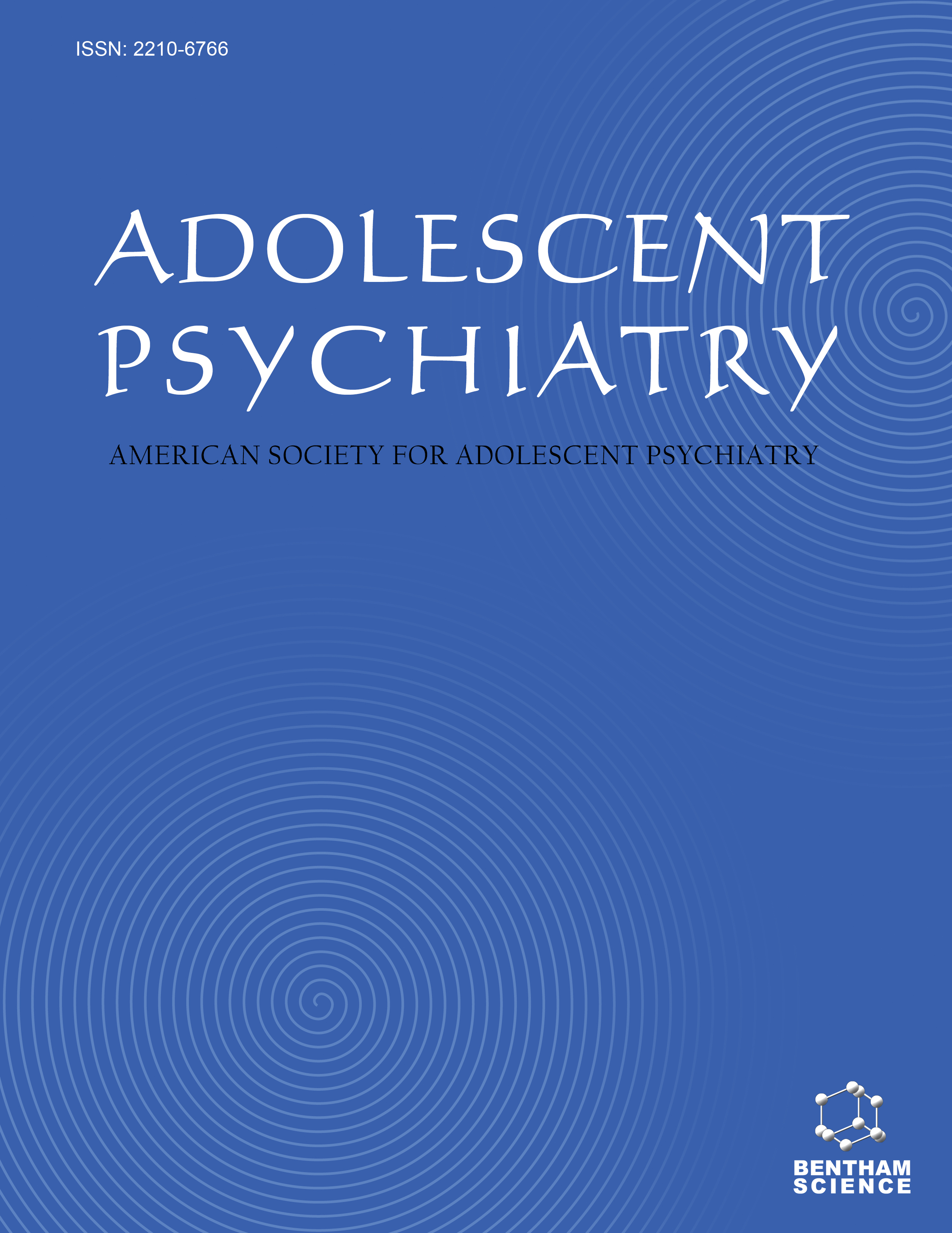- Home
- A-Z Publications
- Adolescent Psychiatry
- Previous Issues
- Volume 7, Issue 4, 2017
Adolescent Psychiatry - Volume 7, Issue 4, 2017
Volume 7, Issue 4, 2017
-
-
Complex Trauma and Developmental Trauma Disorder in Adolescence
More LessBackground: Complex trauma involves prolonged or repeated exposure during critical developmental windows or transitions (including adolescence) to intentional interpersonal victimization that is inescapable and causes profound insecurity. Developmental Trauma Disorder is a clinical framework for describing heterogeneous sequelae of complex trauma. Objective: To review the conceptual, diagnostic, clinical, a Read More
-
-
-
Eating Disorders and Abuse
More LessAuthors: Ida Dancyger, G. A. Narayan and Victor FornariBackground: Individuals with eating disorders often report histories of childhood sexual abuse, but no direct relationship has been elucidated. Studies have examined sexual, physical and emotional abuse as factors contributing to the pathogenesis of eating disorders. Objective: Clinical studies and vignettes of eating disorder patients with histories of abuse or neglect are discussed, as are personality and family traits, ge Read More
-
-
-
Involving Adolescents in Building Community Resilience for Disasters
More LessAuthors: Betty Pfefferbaum, Richard L. Van Horn and Rose L. PfefferbaumBackground: The federal approach to disaster management in the United States encourages public participation to build resilient communities. Many children are affected by disasters and they now are recognized as potential participants in disaster management activities. Objective: The objective of this paper is to present a theoretical rationale and approach for involving youth in enhancing community resilience for disas Read More
-
-
-
The Interplay between Posttraumatic Stress and Grief Reactions in Traumatically Bereaved Adolescents: When Trauma, Bereavement, and Adolescence Converge
More LessBackground and Scope of the Problem. High prevalence rates of deaths by accidents, suicides, and homicides, coupled with expanding social networks, place adolescents at significant risk for traumatic bereavement occasioned by the traumatic deaths of their friends, romantic partners, and family members. Conceptual Analysis. This conceptual paper focuses on the interplay between posttraumatic stress symptoms and Read More
-
-
-
Academic Achievement in Young Adults with a History of Adolescent Physical Abuse
More LessBackground/Objective: About 16% of documented cases of maltreatment take place in adolescence, a developmental period which carries unique vulnerability. Studies investigating the impact of physical abuse find negative outcomes in cognitive functioning and academic performance, both in the short and long term. The present study aims to examine the impact of documented adolescent physical abuse on adolescent and ad Read More
-
-
-
Pathological Narcissism in Adolescents: Relationships with Childhood Maltreatment and Internalizing and Externalizing Difficulties
More LessAuthors: Karin Ensink, Simon Chretien, Lina Normandin, Michael Begin, Deanne Daigle and Peter FonagyBackground: There are significant gaps in our understanding of vulnerable and grandiose narcissism in adolescents and whether it is associated with psychosocial difficulties as well as risk factors such as child maltreatment. Objective: The aim of this study was to examine vulnerable and grandiose narcissism in adolescents and young adults. Method: 570 participants (ages 14-21) from the community completed an online Read More
-
-
-
A Three-Tiered Model of School-Based Trauma Services to Address Long-Term Impact of a Major Natural Disaster
More LessAuthors: Peter J. D`Amico, Linda Carmine, Helena Roderick, Maryann DeSilva and Juliet M. VogelBackground: After disasters that produce extensive damage and community disruption, many youth experience persisting psychological distress. Current recommendations are for stepped intervention, including broad resilience building, then screening and when warranted, evidence-based interventions. Schools are a logical site for reaching youth but often lack resources and expertise to provide sufficient post-disaster care Read More
-
-
-
Childhood Maltreatment, Adolescent Psychological Difficulties and Borderline Personality Features: A Person-Centered Approach
More LessAuthors: Michael Begin, Karin Ensink, Sarah Chabot, Lina Normandin and Peter FonagyBackground: Childhood maltreatment represents a major and preventable risk factor for psychiatric difficulties. However, the majority of studies treat maltreatment experiences as if they occur alone, but evidence suggests co-occurrence of maltreatment is the norm rather than the exception. Little is known regarding consequences of particular types and combinations of childhood maltreatment in adolescence. Obje Read More
-
Most Read This Month
Article
content/journals/aps
Journal
10
5
false
en


